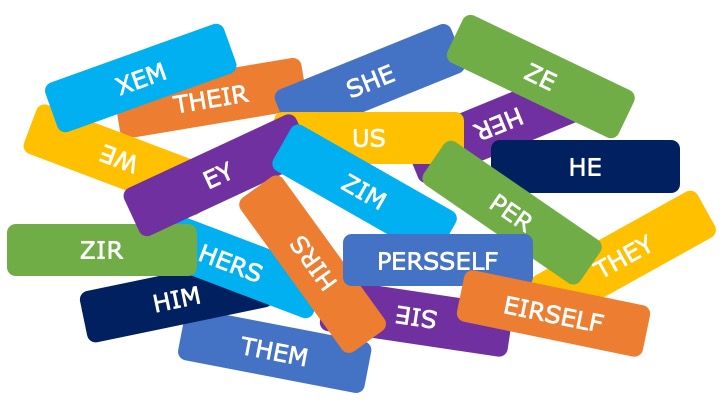For the last few years, enhancing inclusion in the workplace has been a hot topic in the news and in organizations. Leaders began to realize that greater inclusion in the workplace is correlated with greater performance and employee engagement. This led to many organizations taking a step forward toward creating a more inclusive workplace.
One of the ways in which organizations can enhance inclusion is by acknowledging and respecting all gender identities and pronouns. A good first step is to educate all employees on how they can help create and maintain an inclusive workplace by supporting gender identities and pronouns. For example, employees can demonstrate their respect for each other by being conscientious of how they speak to, and behave toward, colleagues of all gender identities.
All employees– Leaders, the workforce, and Diversity, Equity, and Inclusion Champions–are the impetus for enhancing inclusion. Therefore, enhanced inclusion cannot be achieved without all of their commitment to support, acknowledge, and respect all gender identities and pronouns. Enhanced inclusion can lead to a more open and welcoming working environment, thereby leading to greater performance, engagement, and community.
Here are a couple suggestions on how to help cultivate a more inclusive workplace.
Be Willing to Learn – To enhance inclusion, consider educating all employees on gender identity and pronouns. Gender identity (or gender) refers to one’s internal sense of being:
- Male
- Female
- Transgender
- Genderfluid
- Genderqueer
- Nonbinary
- Agender,
If a person specifies their gender identity, it is best to accept it at face value without questions. Conversely, a person’s gender identity should not be assumed as it is internally determined by each person and is not always related to one’s physical appearance. It is important to note that a person’s gender identity may change over time.
Gender identity is not synonymous to sex, which is a scientific assignment of a gender (male or female) to a person upon birth, based upon the person’s biological characteristics (i.e., chromosomes, internal sex organs, and external sex organs).
Demonstrate Respect for All Genders – This involves protecting and supporting all employees’ right to gender expression. Gender expression is the way in which a person expresses and presents oneself to the public. A person may choose to express oneself with one of the following:
- Clothing
- Hairstyle
- Behavior
- Voice, etc.
Protecting and supporting all employees’ right to gender expression can help all employees feel safe and welcome to be their true selves in the workplace, thus boosting productivity. On the other hand, if employees’ right to gender expression is not protected or supported, they may feel constrained, thus hindering productivity. Note that gender expression is not always correlated to gender identity.
Another way employees can demonstrate respect for all genders is by referring to their colleagues by their preferred pronouns. There are a couple ways to determine all employees’ pronouns:
- Politely ask them for their pronoun.
- Look at their signature block in emails to see if they have listed their pronouns on there.
Here is a list of some commonly used pronouns that employees may go by:
- He/him/his
- She/Her/Hers
- They/Them/Theirs
- Ze/Zir/Zirs
- Ey/Em/Eirs(U) (U)
- Per/Per/Pers
- Xe/Xem/Xyrs
- Sie/Hir/Hirs
- Ve/Ver/Vers
- Ne/Nem/Nirs, etc.
If an employee’s pronouns are unknown, simply refer to the employee by the employee’s name. It is better to do so than to assume an employee’s pronouns. In fact, there are people who will ask to be referred to by their name and by no pronouns. Another safe option is to refer to employees by gender-neutral pronouns such as ‘they’, ‘themself’, and ‘themselves’.

